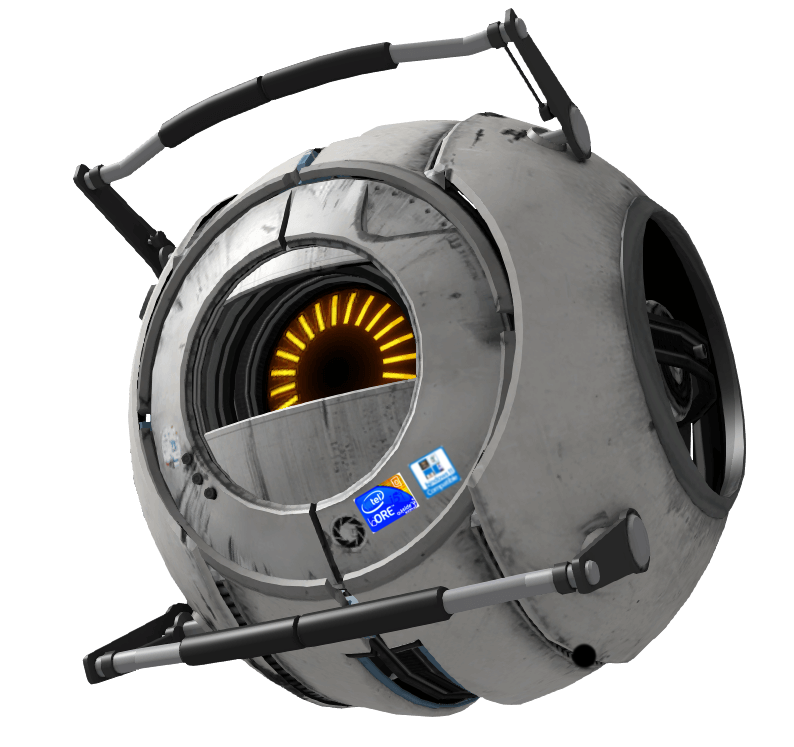Single core, 32 bit CPU, can’t even do video playback on VLC. But it kinda works for some offline work, like text editing, and even emulation through zsnes! It’s crazy how Linux keeps old hardware like this running.
Thankfully though, this laptop CPU is upgradable, and so is the ram, so I’m planning on revitalizing and bringing this old Itautec to the 21st century 😄
itautec
reproduto(…)
points Brazilian
I’m planning on revitalizing and bringing this old Itautec to the 21st century
I think it was born in the 21st century? From this it looks like the first Celeron M was in 2004, and the first at that clockspeed was 2005.
Also, 2GB of RAM is plenty for many purposes - that’s more than any Raspberry Pi before the Pi 4 had!
Actually… You’re right about the 21st century lmao. I just wanted an excuse to quote Metal Gear Solid
Also, the issue is not ram itself, of course, 2GB is enough for lots of fun on Linux, it’s the CPU that’s killing me
ITT: The Four Yorkshiremen Sketch.
2GB of RAM? Low?
Were you born after the year 2000?
Haha, I’ve been used to 4gb ram minimum for most of my life 😆
I remember when 128MB RAM sticks were $400
I remember expanding my Amiga with 512KB to 1MB Fast RAM and later going crazy with another two megabyte Slow RAM.
I remember my dad’s friend upgrading our PC clone to 640K. He used a soldering iron.
I remember when computers had no memory and the storage was on punch cards made from mammoth leather that we had to tan ourselves after spending our weekends hunting the mammoth with spears. Also we carved our code by hand on stone tablets. Young people these days have it easy.
I slept in my first computer - and worked as verbal RAM (first VRAM!) 28 hours a day !
“…and when you tell this to young people today, they won’t believe you !” - Monty Python.
Oh so that’s where the term VRAM comes from! 🤯
You had one job.
Mentioning punch cards had me, but you blew it!
Punch cards. The “true” PC era.
“Stone” tablets? Luxury. Ours were dried mammoth dung.
deleted by creator
deleted by creator
Lmao, I’ve ran Linux on an eeePC with 1GB RAM and 900MHz Intel Atom. Compiling gcc & glibc could take hours.
Edit: RPi3 still got only 1GB, BeagleBone Black even got 512MB, don’t forget RPi0
Get off my lawn
I still have a cool laptop (with Mandrake and kde) with 192 megs of memory somewhere.
Ran an ISP on a Pentium 90 and a few 486s. Linux and FreeBSD!
I think my lowest was a 33 MHz 486sx (maybe DX) with 8MB of RAM.
I wouldn’t want to try it today though.
My first was a rare CPU, but not that old. It was my first PC and was fanless, which I used to think was normal until years later. It was a VIA Cyrix III, maybe 32 MB RAM. Another interesting thing about this CPU was its overclock capabilities. I don’t know how it did survive my overclocking, since I genuinely didn’t have a clue, except that if I raised the numbers, KDE could run, but if I didn’t, well, Xfce was also cool.
The first machine I ran Linux on was a 486DX 33MHz too. I think it had 8 MB (or some weird thing like 4 MB originally and randomly stuck 8 MB addition? I don’t remember anymore.)
I had the exact same configuration. 4MB RAM upgraded to 8MB. 40MB HDD upgraded to 200MB later. And the fugliest case with triangular pastel buttons you ever saw. Ran Windows 3.11 then Slackware Linux on that for many years.
I started on a DX2 66 MHz with 4 MB RAM and 420 MB HDD. 4 x 1 MB modules. Later upgraded to 20 MB RAM (added 4 x 4 modules) and a 1.2 GB Matrox HDD that need an extra driver to be used. With 20 MB I created a RAM drive, copied Doom to it and ran it - loaded real fast but frame rate was horrible.
That’s awesome. My 1993 self is very envious of your rig.
Who used those triangular pastel buttons? I remember seeing them on some friends’ computers but not on any Dells or Gateway 2000 machines. Maybe Compaq? Or Packard Bell?
I have not been able to find the case again since. It was a local shop that built it from parts, so it was not a big brand. I didn’t pick the parts either, since I knew nothing about PCs at the time, and it showed lol.
Edit: it was a white/beige mini tower. If I recall correctly, it was similar to a lot of cases at the time, with a black band across and a circular button on the right. The turbo and reset buttons were pink and teal in the shape of triangles. I purchased it in 1992 when I needed a PC for college.
You one-upper, you.
Yeah, mine was similar. Had some old Win95 machines from work that were getting thrown away; scavenged as much RAM as possible into one case and left Red Hat Linux downloading overnight on the company modem. Needed two boxes of floppy disks for the installer, and I joined up a 60 MB and an 80MB hard drive using LVM to create the installation drive. It was a surprisingly functional machine - much better at networking than it was as a Win95 computer - but yeah, those days are long gone.
I was running my Gateway 2000 486 sx33 with Linux did she extended amount of time as a router with NAT. I’ve still got it somewhere in the loft.
Complete with cow-print box?
I saw Slackware running on a similar config, although it was probably a 486/50 or 486/66.
[ laughs in NetBSD ]
MPV is a much lighter video player. Try that.
Pretty sure my dad’s secondary desktop I used for my first Linux install had a 1.2 GHz Duron or something and 512 MB. I’m pretty sure I got that funky compiz fusion 3D-cube desktop running on there 😅
I have a 2001 compaq n600 still being used from time to time as a gateway for old tech as it has COM as well as LPT and analog video outs. It has 1.2ghz celeron, 512mb ram, 30 gig drive. Thing is kind of a beast for its time as my own desktop at that time was nowhere close to its spects. Thing was gifted to me after initially being given to install win7 on it. After telling the guy that this isnt going to happen and the best they couldd hope for is winxp and even then it’d struggle, they told me “oh, so linux is the only option then… well, it doesnt work for me. Have it, then, have fun with it!”. I put ubuntu on it, but still gnome ground the poor cpu to a halt, so I had to switch to Xfce. Luckily it turned good enough not to downgrade further to things like bare X or Kolibri OS. Worked as a solitaire machine for my dad for a few years, helped me fix and set up stuff on a few occasions, but nowadays mostly collecting dust in my drawer.
can’t even do video playback on VLC.
I remember back in the day when I downloaded the first divx file my K6-400 couldn’t smoothly play… I had been so used to thinking of that as a powerhouse coming from my Pentium 60, which was the first one I ran Linux on.
I had slackware on my 386DX 40. 4mb ram. It was kinda short-lived. I never got my modem working. I got a book, paged thought it. Learning shit was hard in the 90’s Internet.
I got my modem working in Slackware in 1997 - but the PPP driver (equivalent of WinSock - which worked in Windows quite well at the time) would only work during the first boot of the system. After a reboot, PPP would never return, and the best I got out of the internet about it at the time (mostly using my Windows PC) was “real men connect to the internet through ethernet.”
Between that an the useless (unless you enjoy frustration) sound drivers, I declared Linux “not ready for prime time,” and left it to others until starting back in via Cygwin in 2003, then Gentoo (for 64 bit access you couldn’t get any other way) in 2005.
Yeah I did another couple of false starts over the next couple of years. This time at different jobs. I finally made friends with Redhat on a laptop with Enlightenment WM. I managed to stay Linux in the desktop for the next 14 years. KDE, Gnome , switch to Ubuntu when Red hat decided to go and split out the door, went back to Fedora when Cannocial had their bad boy phase. OSX lured me away and 2015 I think it was. Super disappointed with the level of control I had over the OS, I went back to Windows for WSL. Continued* on that until Debian got their shit back together (nonfree). Eventually slid into NixOS, I don’t know if it’s as painful as slack where I was but it certainly feels like it, and I kind of missed that.
I did OS-X for my MacBookPro daily driver 2006-2008 (said premium laptop dying because of mis-applied thermal paste by the factory) - and started using a bit of Debian and RedHat at the time… my observation was, and still is: they all suck, but in different ways. If you value stability and control, there’s no comparison to the open source model. Windows used to have the edge for hardware support, but that has eroded to the point that we had selected a WiFi card for our Linux system this year, but we’re having to change now that we’re moving to Win11 - no Windows drivers for that M.2 WiFi/BT card.
Hell yeah! Love seeing old hardware like this still running a modern OS.
With Linux, if your hardware is a decade old, you’ve barely even reached middle-age.
Meanwhile Windows 11 won’t even allow an official install on hardware that’s 4-5 years old.
Long live Linux & FOSS ✊
Pfft, what no LXDE
even better LXQT
Up 'til 2022 or 2023 company I work for used Pentium 4 at POS PCs running ancient openSUSE. They would be still in service if it weren’t for leaking/swollen caps on most motherboards. Pure power wasn’t really there, but it was plenty enough to run that checkout software…












